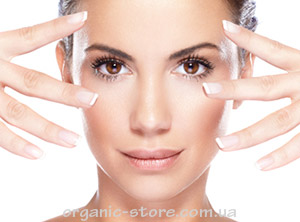 A lot of people associate chemical exfoliation with expensive salon procedures and a long recovery period. However, this is only true for medium depth and deep chemical peels. Superficial chemical peels are safe for at-home use, as long as you choose the right product for your skin and strictly follow the instructions. How to choose the right chemical peel for at-home use?
A lot of people associate chemical exfoliation with expensive salon procedures and a long recovery period. However, this is only true for medium depth and deep chemical peels. Superficial chemical peels are safe for at-home use, as long as you choose the right product for your skin and strictly follow the instructions. How to choose the right chemical peel for at-home use?
Exfoliation is an important cosmetic procedure that involves the removal of dead skin cells from the skin’s surface. It can be achieved by mechanical or chemical means. Mechanical exfoliation involves physically scrubbing the skin with an abrasive, and chemical exfoliation involves the use of organic acids or enzymes that help to slough off dead skin cells by loosening the glue-like substance holding them together. At-home chemical peels usually contain alpha and/or beta hydroxy acids, such as salicylic acid, glycolic acid, citric acid, malic acid, lactic acid, mandelic acid, etc.
AHAs, BHAs and fruit enzymes contained in chemical peels remove dead cells from the skin surface, stimulate skin regeneration and renewal, help to control sebum production, reduce the visibility of acne spots and scars, and eliminate unwanted pigmentation. In addition, organic acids unclog skin pores and make them appear smaller, make the skin firmer, and stimulate the production of collagen and elastin, resulting in a lifting effect.
The “depth” of a chemical peel (its effect on the skin) depends on the concentration of acids. Low concentration products, which contain 20% of acids or less, are designed for superficial exfoliation and can be used at home, whereas chemical peels containing 20% to 70% of acids are intended for medium depth exfoliation and are designed for professional use only.
Chemical peels can contain a lot of various acids and their combinations. It may be hard to choose the right at-home facial peel for your skin if you don’t known how they differ from one another and what exactly you’re looking for. Let’s take a closer look at several types of at-home chemical peels to make it easier for you to choose.
Mandelic Peel
This chemical peel is based on mandelic acid. Due to its large molecule size, mandelic acid is considered one of the gentlest alpha hydroxy acids. It penetrates the skin more slowly than other AHAs and is therefore less likely to cause skin redness, dryness, flaking, or irritation.
Mandelic peel is suitable for all skin types, but it is considered the best for oily and problem skin, since this product helps to eliminate acne, reduces the appearance of pores, normalises the production of sebum, and prevents acne scars and blackheads. It also helps to treat rosacea and hyperpigmentation, as well as smooths out fine lines.
Unlike most other chemical peels, mandelic peel can be used all the year round because it doesn’t make the skin more vulnerable to sun radiation (as long as you take necessary precautions). As we’ve already said, this chemical peel is one of the gentlest products of its kind, so it’s a perfect choice for the ones who’ve never tried chemical exfoliation before.
Lactic Peel
This type of chemical peel is based on lactic acid, which is also very gentle (in fact, it even contributes to skin hydration) and doesn’t irritate the skin. Lactic acid is so mild that you can even use it to exfoliate the thin and delicate skin around your eyes.
Thanks to its gentleness, lactic peel is a great choice for dry, sensitive and allergy-prone skin. It also helps to combat skin dehydration and dull complexion, smooths out fine lines, and reduces pigmentation.
This chemical peel helps to moisturise the skin, produces a skin lightening effect, improves complexion and evens out skin tone, makes the skin smoother, normalises sebum secretion, prevents the signs of premature skin ageing, eliminates breakouts, and makes the skin look fresh and well-rested.
Gluconolactone Peel
This chemical peel is formulated with gluconolactone, also known as glucono delta-lactone (GDL). It is a derivative of d-gluconic acid that partially hydrolyses to gluconic acid on contact with water. Since its molecules are larger than molecules of alpha hydroxy acids, gluconolactone peel is gentler than AHAs peels. Low-concentration GDL peel is safe to use in summer, since its doesn’t increase the skin’s sensitivity to UV rays (but you should still use sunscreen, of course).
Gluconolactone is the perfect choice for very dry and sensitive skin, as well as for mature skin. It restores the skin’s firmness and elasticity, reduces the signs of photoageing, helps to lock in moisture, makes the skin smoother, and produces an antioxidant and anti-inflammatory effect.
In addition, this peel improves the synthesis of collagen and elastin in the epidermis, restores the skin’s natural protective barrier, and gives a fresh, healthy and radiant complexion.
AHA Fruit Acid Peel
This chemical peel is based on a well-balanced combination of AHAs (lactic acid, tartaric acid, citric acid, glycolic acid). The acids for these peel have been selected so that the product has a mild effect and doesn’t irritate the skin. It has a pH of 3.5, which is slightly more acidic than your skin’s natural pH. The main purposes of AHA fruit acid peel are to stimulate the production of collagen, unclog pores, rejuvenate the skin, and even out complexion.
AHA fruit acid peel is best suited for tired, oily, dry, and mature skin. It helps to eliminate pigmentation (including freckles), smooths out fine lines, reduces the appearance of pores, combats comedones, and boosts the skin’s elasticity and firmness. Regular at-home exfoliation with AHA peel will help to make the skin healthy and velvety smooth.
Other types of chemical peels for at-home use include salicylic peel, phytic peel, glycolic peel, succinic peel, pyruvic peel, ferulic peel, trichloroacetic peel, and more. Each of them has its pros and cons, and you should make the choice based on the individual peculiarities of your skin. In any case, the intensity and depth of exfoliation depend on the concentration of acids, while the probability of irritation and other skin reaction depends on the pH level of the product.
As a result, experienced beauticians recommend that you start with low-concentration peels for your skin to get used to chemical exfoliation. After that, you can gradually increase concentration if you need. At the same time, it is very important to follow instructions for at-home facial peels, including the pre-peel skin preparation and the post-peel application of moisturising and soothing products.
In our online shop Organic Store, you can find a collection of chemical peels for at-home use produced by Ukraine-based beauty brand Cocos. We offer affordable prices, convenient payment methods, and international delivery to most parts of the world.
